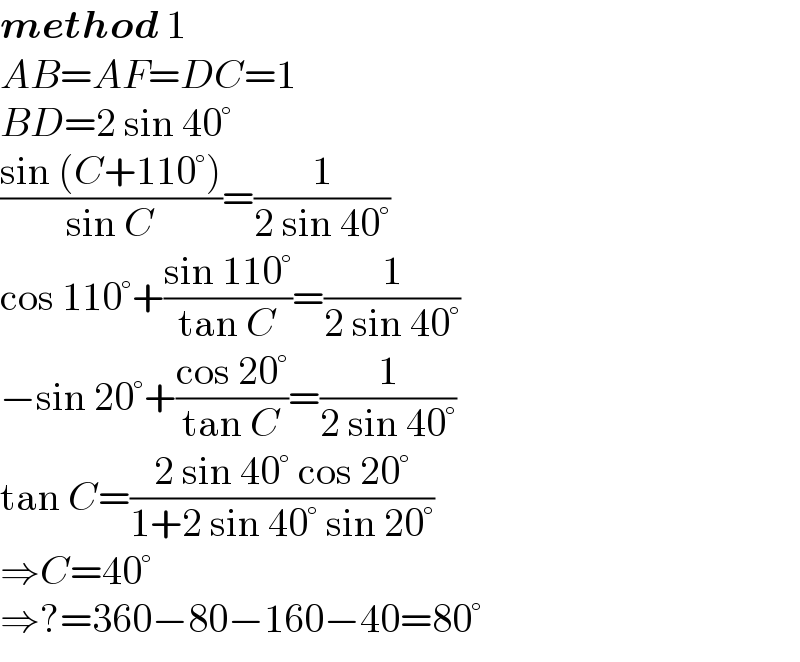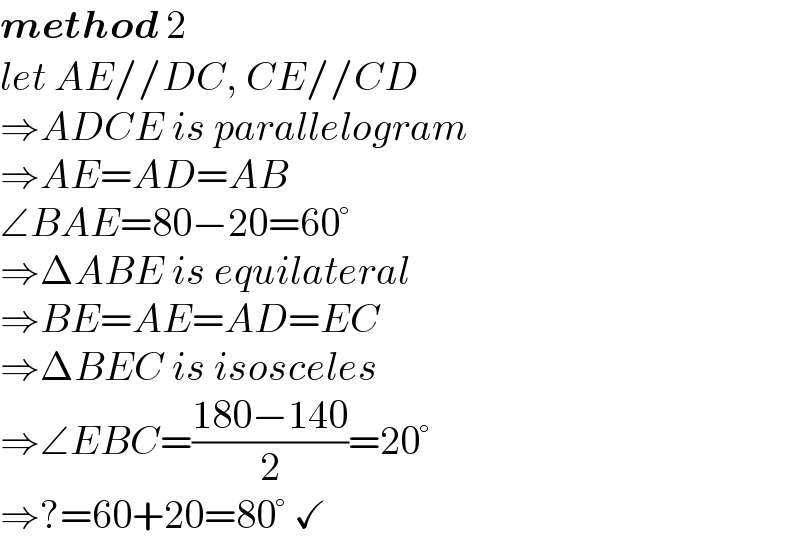
Question and Answers Forum
Question Number 177978 by mr W last updated on 11/Oct/22

Answered by mr W last updated on 11/Oct/22

Commented by Tawa11 last updated on 11/Oct/22

Answered by mr W last updated on 11/Oct/22

Commented by mr W last updated on 11/Oct/22

Commented by Tawa11 last updated on 11/Oct/22

Answered by a.lgnaoui last updated on 11/Oct/22
![ΔADC AD=DC ⇒∡DAC=∡DCA=((180−160)/2)=10 BAC=80−10=70 160=70+90^ AC^2 =2AD^2 −2AD^2 cos 160=2AD^2 (1+sin 70) AC=AD(√(2(1+sin 70))) =AB(√(2(1+sin 70))) (1) ΔABC AC^2 =AB^2 +BC^2 −2AB×BCcos x calcul de BC BC^2 =AB^2 +AC^2 −2AB×ACcos 70 =AB^2 +2AD^2 (1+sin 70)−2AB(AD(√(2(1+sin 70)) )cos 70 BC^2 =AB^2 +2AB^2 (1+sin 70)−2AB^2 (√(2(1+sin 70)) )cos 70 =AB^2 [3+2sin 70−2(√(2(1+sin 70)) )cos 70] ((sin x)/(AC))=((sin 70)/(BC)) ⇒((sin^2 x)/(AC^2 ))= ((sin^2 70)/(BC^2 )) ⇔((sin^2 x)/(2AB^2 (1+sin 70))) = ((sin^2 70)/(AB^2 [3+2sin 70−2(√(2(1+sin 70))) cos 70])) ((sin^2 x)/(2(1+sin 70)))=((sin^2 70)/(3+2sin 70−2(√(2(1+sin 70)) )cos 70])) =((0,88302)/(3,53218)) sin^2 x=((3,34480)/(3,53218))=0,946955 sin x=(√(0,946955)) =0,97311 x=sin^(−1) (0,97311)=76,68^°](Q178005.png)
Commented by mr W last updated on 12/Oct/22

Commented by a.lgnaoui last updated on 12/Oct/22

Commented by a.lgnaoui last updated on 12/Oct/22

